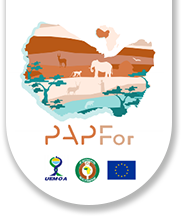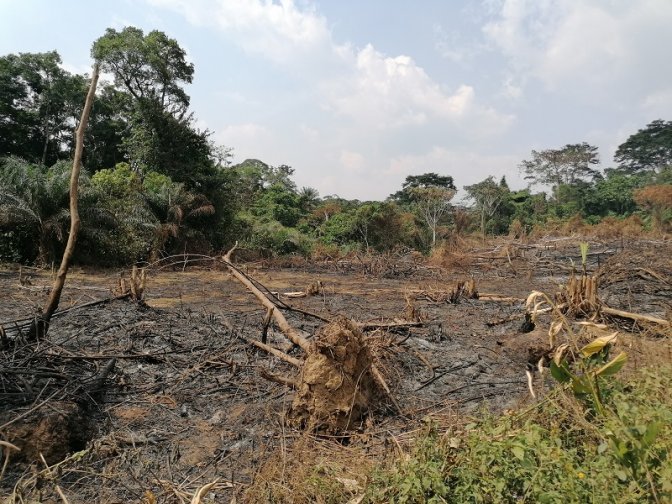Home / Guinean forests / Threats / Deforestation for agriculture / Slash-and-burn agriculture
Slash-and-burn agriculture
Slash-and-burn agriculture is practised in tropical rainforests. It is the most common form of shifting agriculture in Guinean forests.
The principle is simple: a farmer fells the largest trees and then uses fire to clear remaining vegetation before seeding the plot. This technique has two advantages: it requires less work and less sophisticated tools than clearing by hand, and the ash produced by burning provides mineral salts that fertilise the soil. Sometimes the felled trees are used to produce charcoal, but quite often they are left in place.
Shifting food crop farming is generally used to grow plants that form the staple diet of rural communities: cereals (maize) or starchy foods (yam, cassava, plantain), vegetables and condiments (chilli) and plants that provide fat (groundnuts). Cassava can also be found in systems such as monoculture or intercropping.
In the first few years after burning, the land is fertile and is well-suited to support fields of nutrient-demanding crops. Farmers plant yams, taro, maize and groundnuts.
Fields of squash, groundnuts or plantains are also ideal for this type of farming. Squash seeds, for example, are sown before the first rains and the day after burning. And squash use the dead trunks to establish their growth.
Gradually, however, the soil quality declines, and farmers are forced to plant less nutrient-intensive plants, such as plantain and cassava. After three to four years, the soil is largely infertile, and the farmer is forced to clear another area. The first plot is left to regenerate, but will need to be left fallow for several decades before it can be used again.
Slash-and-burn agriculture is a farming technique that works sustainably when the population density is very low, because the large volume of land available allows for long fallow periods. This has long been the case in rural Africa. However, the recent population explosion has forced farmers to shorten the fallow period in order to feed their families, which makes the crops less productive and often pushes communities to clear new forests, making the system unsustainable at present.
As a result, this shifting agriculture leads to deforestation and degradation of Guinean forests and their soils.
According to Global Forest Watch (2019), shifting cultivation accounts for 94% to 99% of forest cover loss in countries such as Côte d’Ivoire, Ghana, Guinea, Liberia, Nigeria and Sierra Leone.
In the same vein, a WWF study in 2020 identified deforestation fronts: ‘regions with a high concentration of deforestation hotspots and where significant areas of remaining forest are threatened’. West Africa (in particular Liberia, Côte d’Ivoire and Ghana) was identified as a one such region. This front has an average annual deforestation rate of more than 0.5% over the period 2000-2018, with 6% of forest cover lost during this period.


